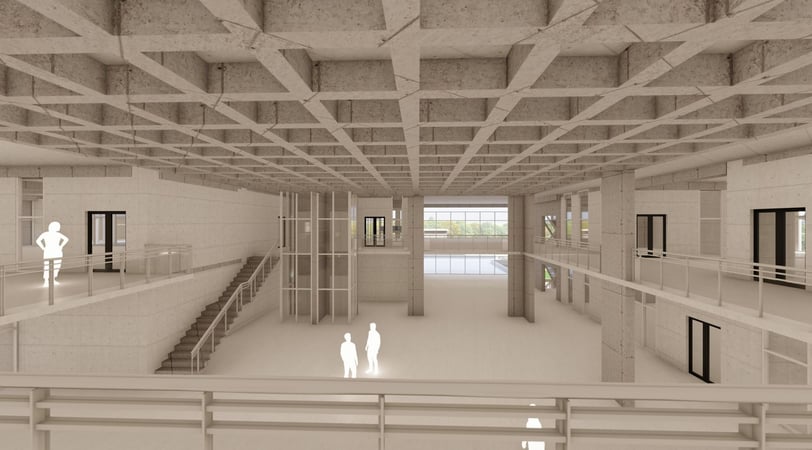Strategies Behind Regeneration of Post-Pandemic Health Space Design
This article describes the strategies behind the regeneration of post-pandemic health space.
INNOVATIONARCHITECTURAL STUDY
Muhammad Golam Sami , Mahmuda Yasmin Dola
6/10/20222 min read


Image: Medical College and Hospital Design Project, Muhammad Golam Sami & Mahmuda Yasmin Dola'2022
Preparing healthcare facilities for future challenges is the foremost strategy for designing post-pandemic resilience in hospitals and related organizations. In that setting, the following factors for architectural design can provide guidance. The first issue at the intersection of hospital design and epidemic management is patient flow. In general, hospitals are not built to limit movement. Thus, this is usually not an issue. However, hospitals discovered during COVID-19 that the more infected patients walked around, the more likely they were to spread the virus. Second, after COVID-19, one item that should be considered in a hospital is improved control of hospital entrances. During the COVID time, for example, general emergency department (E.D.) vestibules are more crowded, and maybe extra needs such as a screening space and a built-in desk. It must be regarded as a long-term solution.
Third, the future E.D. may have a distinct waiting room once patients pass through the vestibule. Individuals exhibiting epidemic signs can be recognized by other patients, assisting in preventing the epidemic and making tracking such patients easier. Fourth, many patients proceed to the operating room (OR) or suite after leaving the hospital. These locations are also altering as a result of the COVID-19 experience.
Fourth, many patients proceed to the operating room (OR) or suite after leaving the hospital. These locations are also altering as a result of the COVID-19 experience. Positive pressure, which prevents airborne germs from entering the hallway, is a crucial instrument in the prevention of infection in the operating room. Positive pressure, however, is not desirable if the patient on the operating table has a sickness transmitted by airborne germs since pathogens can move via the corridors.
An anteroom between the OR and the corridor is one conceivable design solution. The key to a patient's room in a post-Covid-19 hospital is flexibility. Patient rooms are usually used for primary purposes, such as housing someone who needs attention but not intensive care. During a wave, however, a flexible patient's room can be turned into a location that provides more intensive care up to the intensive level.
Another significant factor to consider while establishing a hospital after COVID-19 is dedicated areas for epidemic patients. Many hospitals contain some independent rooms. However, keeping such units together may be critical to their future design.
Following COVID-19, the main concept of hospital design is that hospitals now have the chance to apply this design strategy and choice to prepare for the future. Managing hospital airflow would almost certainly be critical in any future pandemic, and thankfully, most hospital air handlers have previously demonstrated efficacy in the developed world.
Meet The AuthorS


Muhammad Golam Sami
B. Arch, Khulna University of Engineering & Technology, Khulna, Bangladesh Architect | Futurist | Sustainable Design Expert
Operational Head, ADORA Studios, Bangladesh
Founder, samism.org
Lecturer, Department of Architecture
Northern University of Business & Technology


Mahmuda Yasmin Dola
B. Arch, Khulna University of Engineering & Technology, Khulna, Bangladesh Architect | Analytical Practitioner
Head of Construction, ADORA Studios, Bangladesh
CMO & Head of Construction, SS Construction & Power Solution, Bangladesh
Related ARTICLES
Related PROJECTS
Post-pandemic Hospital & Institutional Design: New Modern Medical College & 250 Bed Hospital, Khulna
The hospital, one of the riskiest areas of viral transmission and a backbone for pandemic curing needs to be redefined with new spatial principles. On the other hand, redesigning institutional programs and syntax will help us to better understand the relationship between public and private space according to proper health design requirements. According to WHO, environmental aspects are one of the vital reasons for the increasing percentage of curability of patients.
Image: Hospital and Medical College Design Project
Location: Chak Ashankhali, Khulna; Year: 2022




